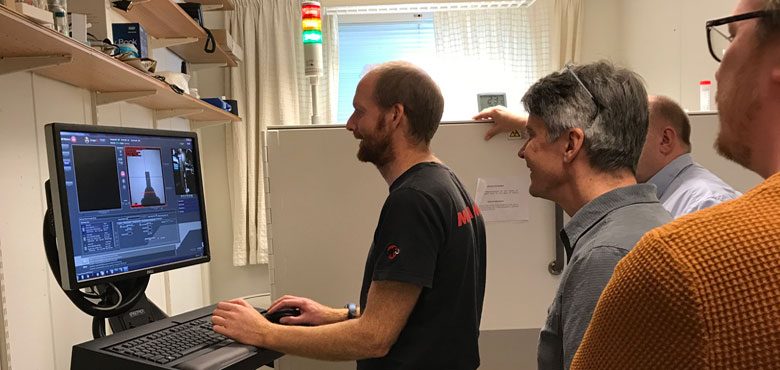
Deformation and granular mechanics
Deformation and granular mechanics
By Stephen Hall, Senior Lecturer at Department of Solid Mechanics, Lund University.
Stephen has worked for over ten years with synchrotron research, and he was introduced to GrainMapper3D on LabDCT in 2017.
“You can go to the synchrotron a couple of times a year and do experiments with one or two samples, which is not enough for scientific analysis – you just have to hope for the best. With the LabDCT we’re able to do a campaign and really investigate material behavior, different types of loading, and many other things. At our lab we want to see how far we can push the LabDCT to measure the deformation of materials – this is an open question for the moment.
I’m using the LabDCT for two main areas:
- Recrystallization and deformation of metallic materials, such as steel (for structural applications) and aluminum (e.g. foils and packaging)
- Granular mechanics, e.g. understanding force transmission and failure in granular materials. This is something I’ve done a lot on the synchrotron. Transfer this to a lab, and it will make a massive difference.”
Easy to use and provides us with tons of data
“So far the GrainMapper3D software essentially is very easy to use, and very straightforward. I’m surprised how easy it is to run the analysis. It’s organized in a very simple way with a limited number of steps required to get results, and it provides us with tons of data.
I’m looking forward to the version 2.0, because it has a lot of the add-ons, which we would like to employ.”
Interested in more cases?
Metal failure and microstructure, Dorte Juul Jensen, Technical University of Denmark
Visualizing materials interfaces in 3D, Ashwin J. Shahani, Assistant Professor at the University of Michigan
